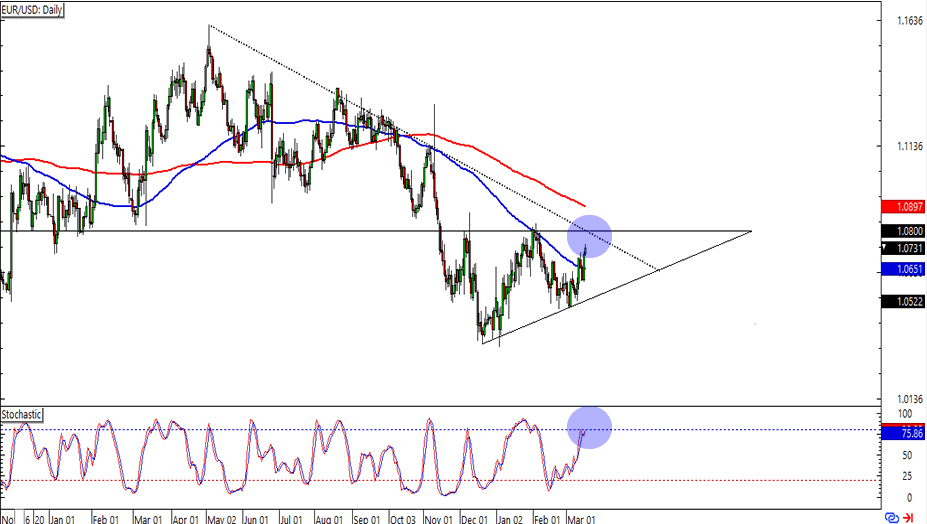Daily Insights Report 16/03/17
- 31 Mar 2017
16 Mar 2017
The Federal Reserve raised the target range for its federal funds rate from 0.75% to 1.00% during March’s meeting. The hike was in line with what the market expected as the US economy almost met the Fed’s target of full employment and stable prices. Similarly, there is now an increased likelihood of receiving additional support from President Trump concerning fiscal stimulus for the economy. The 10-year T-Bill offered in the US was yielding 2.489%, which is its lowest level in more than a week.
The BOJ (Bank of Japan) left the interest rate unchanged at -0.1% at March’s meeting. It was also decided that the country would keep its 10-years government bond yield target around 0% and kept a positive view for the future. The Japanese interest rate has remained fixed for quite some time and is not very volatile. The graph below shows that there has only been one change in the interest rate of Japan.

China’s central bank raised borrowing costs, as the Fed in the US did. China’s economy remained stable and the government raised borrowing costs as reflation seen in factories gave more reason. With an increase in the rate that is charged in open-market operations, the economy should be able to remain stable.
The economy of New Zealand showed to advance by 0.4% in the last quarter of 2016. This is below the market expectation which was believed to be 0.7% and a decline from 0.8% seen in Q3. This is the smallest expansion that the economy has seen in the last six quarters, due to the slowdown in the agriculture industry and manufacturing operations also decreased.
– Emerging market currencies saw small gains against the Dollar. The Dollar index was down 0.2% after already having fallen 0.9% on Wednesday – reaching 100.52. This is the lowest level seen by the index in a month. The currency which gained the most against the Dollar was South Korea’s won, which gained 1.1% on Wednesday alone.
Commodities
– Oil prices gained further from Wednesday’s gain. Data released yesterday from the EIA (Energy Information Administration) showed that the total volume of US crude stocks last week declined for the first time this year since imports slowed down slightly. Inventories at Cushing, OK (considered to be a delivery hub) rose more than expected. Brent crude oil rose by 0.7% to $52.16 per barrel. This is the first time it has risen to more than $52 since last Friday. West Texas Intermediate (WTI) crude on the other hand, rose 0.6% to $49.14 per barrel. In addition to Wednesday’s gain of 2.4%, it is now trading higher than where it opened at on Monday morning.
– Gold increased by a modest 0.4% to reach $1,224.55 per ounce, showing a total of a 2.1% increase in the last two days.
United States Dollar (USD)
Housing Starts and Building Permits (February)
The expectation for this data is 1.26 million starts and 1.25 million permits. Housing starts should hold steady in February. Housing starts may have risen 17% in the three months ending in January as homebuilding is recovering from somewhat weak results seen in the middle of last year. The uplift in starts will likely continue to grow in coming months as the housing market continues to grow.
Euro (EUR)
Consumer Price Index (February)
Preliminary estimates show that inflation in the region may have reached the 2.0% target. In January, the data showed a 1.8%, the closest it has ever been to the target. Even though headline inflation may have risen, core inflation which does not include energy and seasonal food products has been below 1% since 2014. Because headline inflation takes into account energy costs, it may show a different picture and not accurately reflect domestic consumption trends. Since there are no clear-cut signs that about core inflation rising, it is likely that the ECB may delay the restructuring of unconventional policy tools such as quantitative easing.
Technical Analysis
EURUSD
Looking at the daily chart of this currency pair, we can see the pair is approaching the 1.0800 level, which is shown at the falling trend line. This could also be seen as an ascending triangle. Stochastic levels are showing that the pair is nearly overbought. If one believes that a bearish outlook for the Euro, then a shorting strategy would be effective, provided that more evidence is seen. On the other hand, if one believes in a bullish outlook on the Euro, then it may be profitable to let the pair break out of the triangle and cross the 200 day SMA before entering a long trading strategy of the pair.


